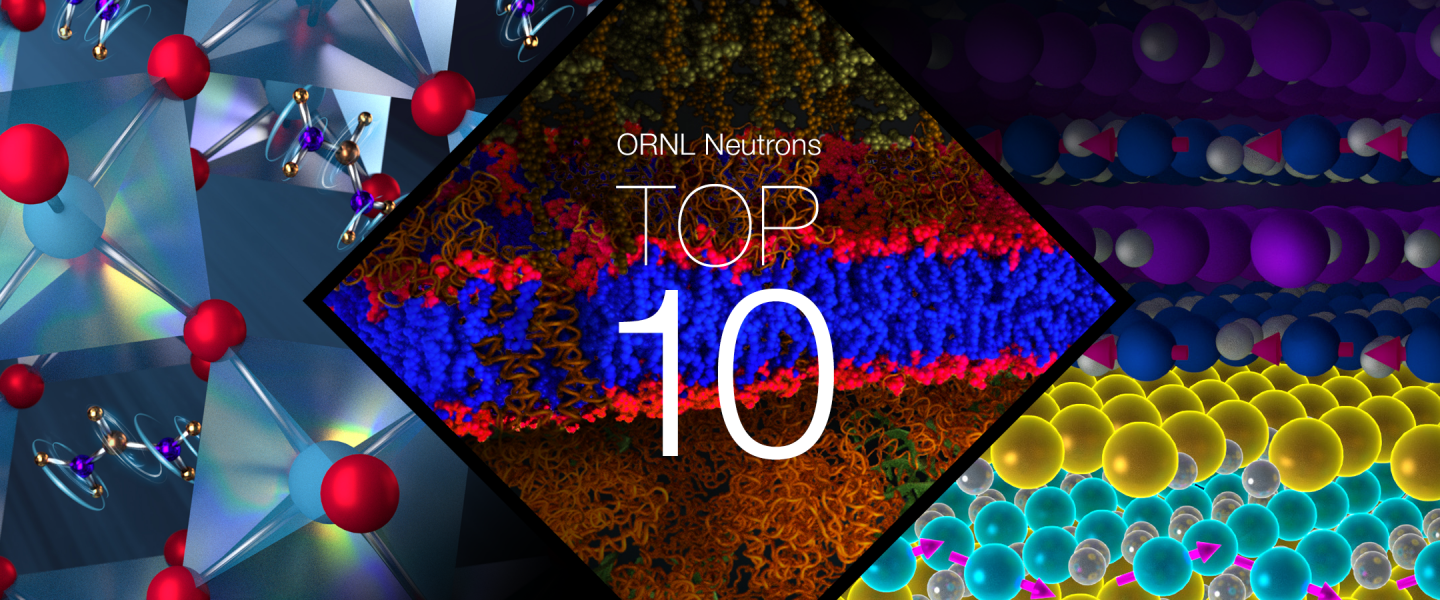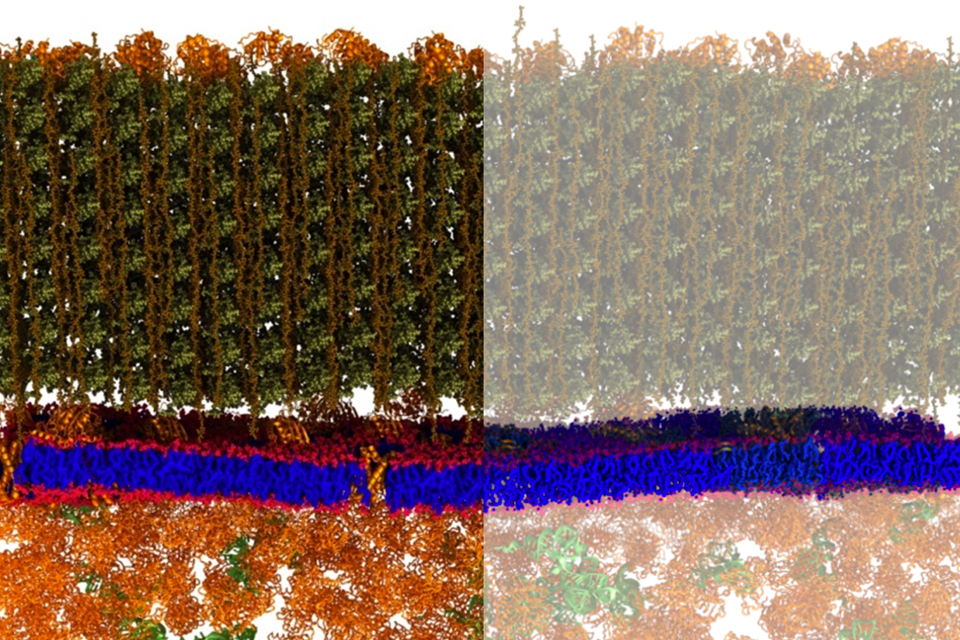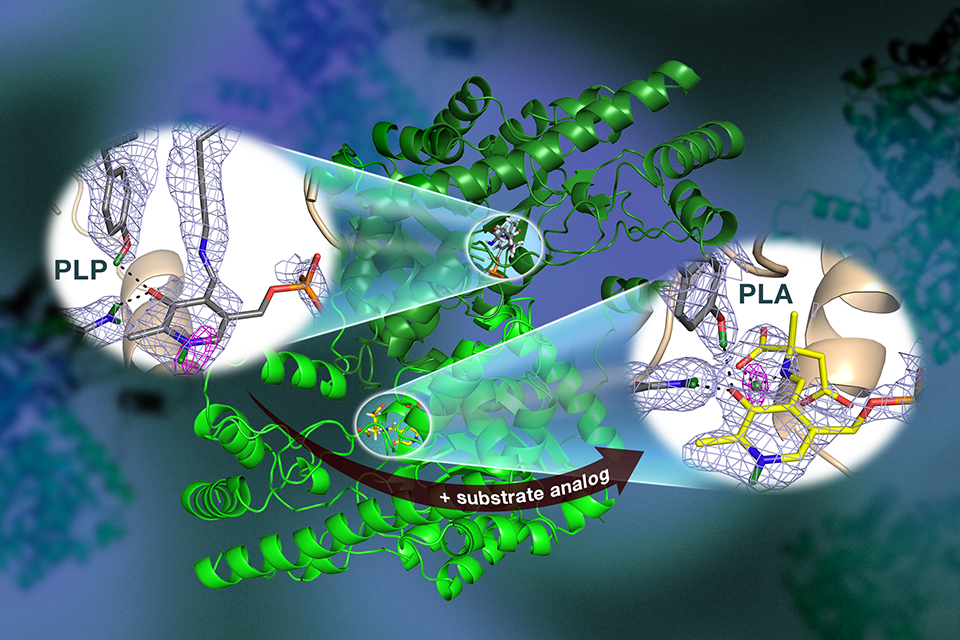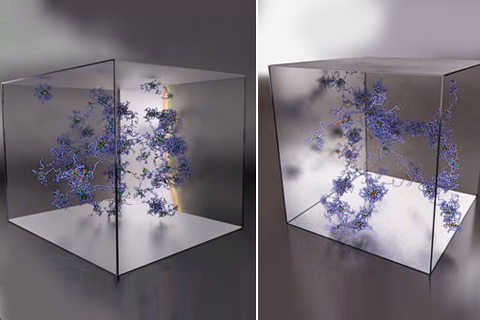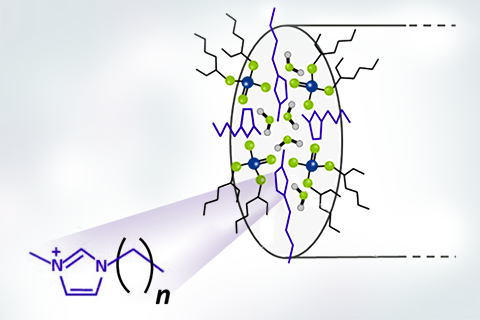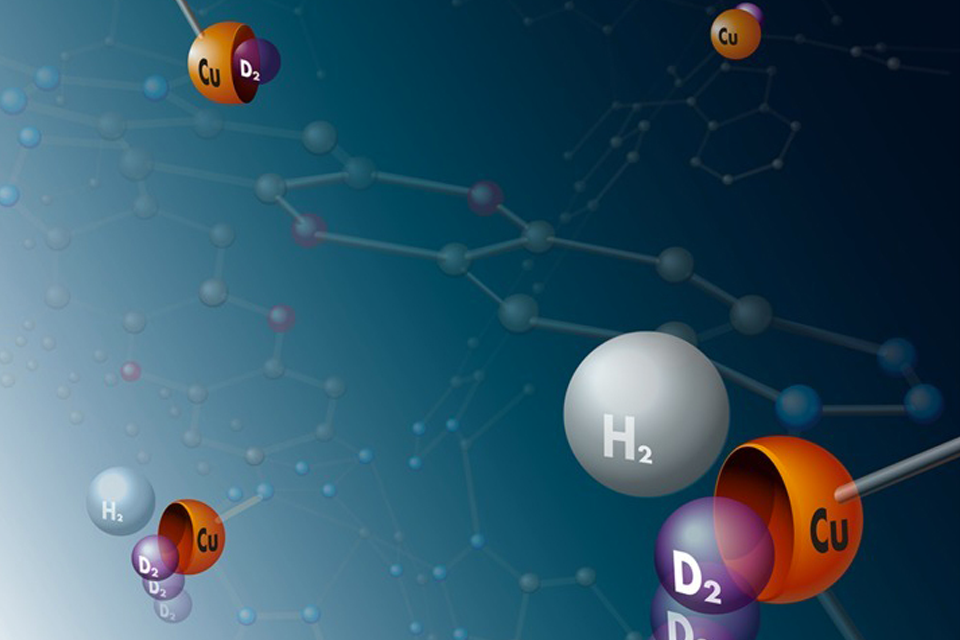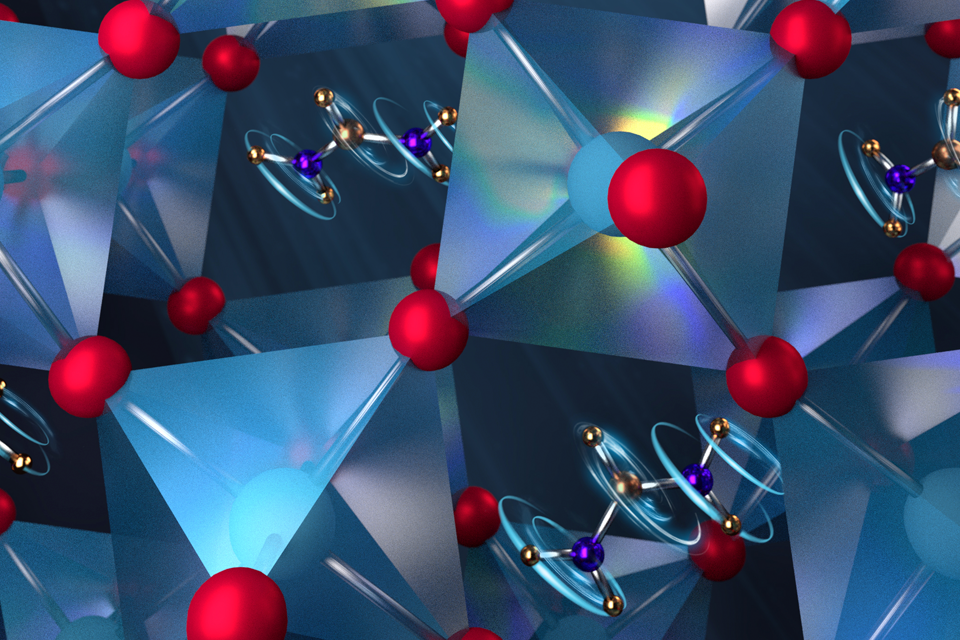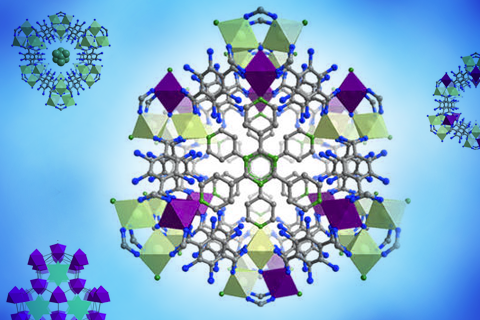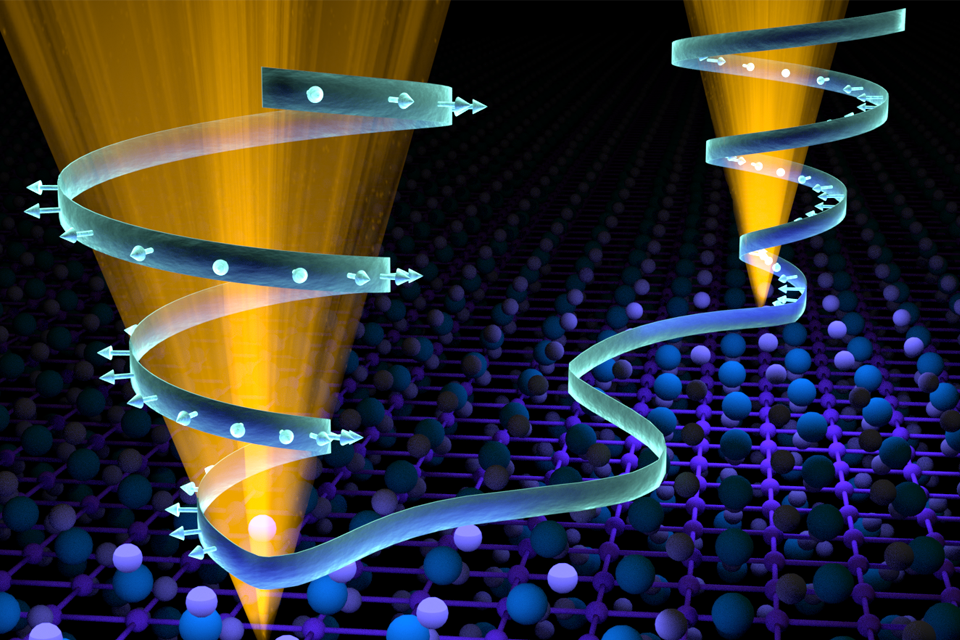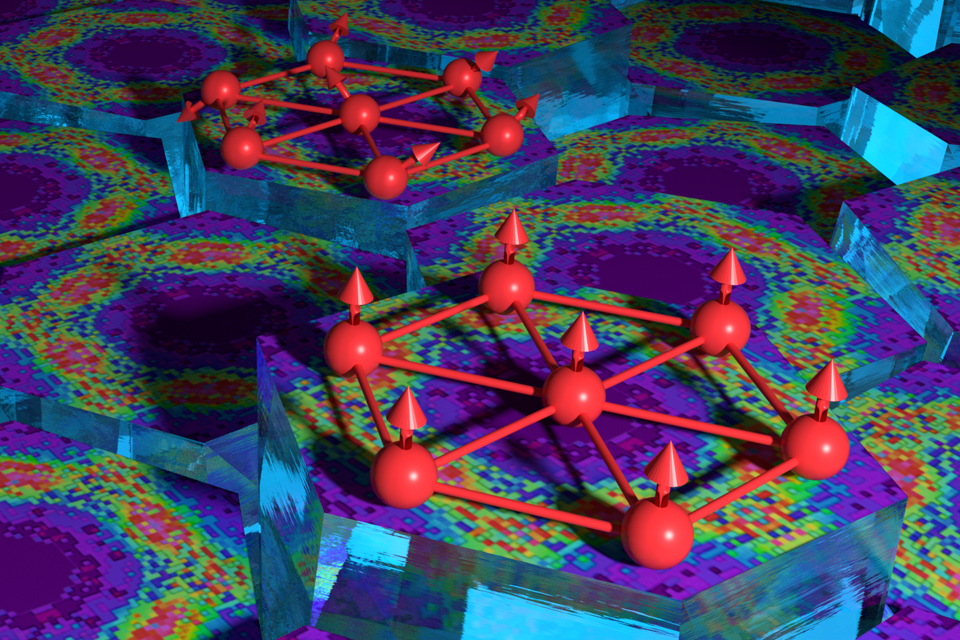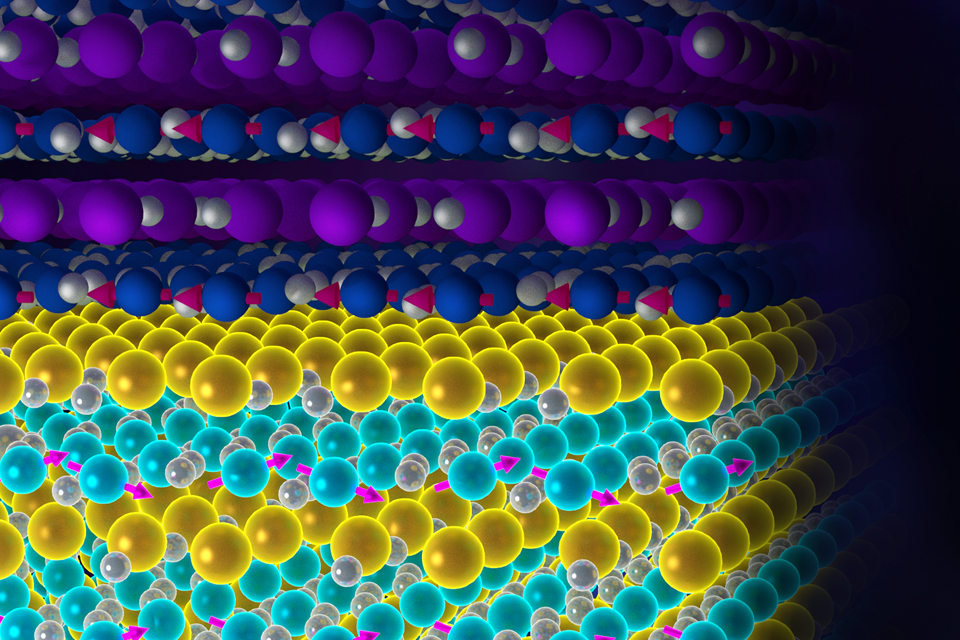From new drug discoveries to water purification and the “untangling” of a host of mysterious quantum phenomena, 2017 was a productive year for Neutron Sciences at the Department of Energy’s Oak Ridge National Laboratory (ORNL).
Last year, ORNL’s High Flux Isotope Reactor (HFIR) and Spallation Neutron Source (SNS) produced nearly 9,000 hours of neutron production hours for 1,275 researchers from around the world. Between the two facilities, 1,355 experiments were conducted and more than 450 instrument papers were published—many in high-impact journals such as Nature Physics and Science.
The 2017 Top 10 list includes the most impactful science achievements in the areas of biology and soft matter, chemistry and engineering, and quantum condensed matter.
Biology and soft matter
Neutrons Provide the First Nanoscale Look at a Living Cell Membrane
PLoS Biology – Researchers performed the first-ever direct nanoscale examination of a living cell membrane. In doing so, they resolved a long-standing debate by identifying tiny groupings of lipid molecules (“lipid rafts”) that are likely key to the cell’s functioning. The findings could prove useful for future research on important intermolecular interactions such as drug–membrane, biofuel–membrane, and even antibiotic–membrane interactions.
Work was performed using BIO-SANS, HFIR CG-3; and EQ-SANS, SNS BL-6
(Image: ORNL/Xiaolin Cheng; Mike Matheson)
Neutrons Observe Vitamin B6-Dependent Enzyme Activity Useful for Drug Development
Nature Communications – Researchers using neutron crystallography performed structural analysis of a vitamin B6–dependent protein, opening new avenues for research into antibiotics and other drugs that could battle diseases such as drug-resistant tuberculosis, malaria, and diabetes.
Work was performed using IMAGINE, HFIR CG-4D
(Image: ORNL/Jill Hemman; Andrey Kovalevsky)
Unraveling How Co-polyelectrolyte Complexes Form Gels
Nature Communications – A combination of neutron scattering and computational modeling was used to explain the mechanism behind rapid gel formation in triblock co-polyelectrolyte complexes. The research lends itself to improved applications in biomedicine and water purification.
Work was performed using EQ-SANS, SNS BL-6
(Image: University of California–Santa Barbara/ Peter Allen; University of Chicago/Marat Andreev)
Reducing Storage Space Needed for Nuclear Waste Using Micelles in Ionic Liquid
Journal of Physical Chemistry Letters – Neutron scattering revealed how control of the structure of micelles in an ionic liquid can be used to provide effective separation of radionuclides from spent nuclear fuels. Further developments may significantly reduce the amount of storage space needed for nuclear waste and lower the risks of environmental contamination from radiological materials.
Work was performed using EQ-SANS, SNS BL-6
(Image: ORNL/Jill Hemman; Carter Abney)
Chemistry and engineering
Neutrons Help Reveal a New Filter for Heavy Hydrogen
Nature Communications – Inelastic neutron scattering provided direct evidence of molecular hydrogen and deuterium exchange in a metal-organic framework (MOF). Research shows certain MOFs can filter out deuterium at liquid nitrogen temperature, which could make separation easier and less expensive and could lead to advancements in medicine and fuels for nuclear fusion.
Work was performed using VISION, SNS BL-16B
(Image: Leipzig University/Thomas Häse)
Revealing the Universal Dynamics of Molecular Rotation in Lead Iodide Perovskites
Journal of American Chemical Society – A combination of neutron total scattering, x-ray diffraction, and solid-state nuclear magnetic resonance resolved the temperature-dependent molecular rotation dynamics for two hybrid perovskites—promising materials for emergent photovoltaic technologies. The work provides a better understanding of the dynamics and structural behaviors for this entire class of materials and advances insights into developing new photovoltaic devices.
Work was performed using NOMAD, SNS BL-1B
(Image: ORNL/Jill Hemman)
Neutrons Reveal Signature of CO2 Uptake in Porous Materials
Nature Communications – Inelastic neutron scattering experiments provided direct evidence of CO2 adsorption in metal-organic frameworks—porous materials with great potential for applications in catalysis, gas storage, and carbon sequestration. The CO2-induced changes in the spectrum, combined with computer simulation, can be used to extract key information on where the CO2 molecules adsorb and how they interact with the host material. Such information can ultimately be used to guide the design of new materials with desired gas adsorption properties.
Work was performed using VISION, SNS BL-16B
(Image: ORNL/Jill Hemman; University of California–Riverside)
Quantum condensed matter
Neutrons Reveal the Wild Weyl World of Semimetals
Nature Materials – Neutron diffraction was used to help a multi-institutional team led by Tulane University investigate a graphene-like strontium-manganese-antimony material (Sr1-yMn1-zSb2) that hosts what researchers suspect is a Weyl semimetal phase. The novel electronic state features nearly massless electrons that have radical potential in next-generation electronic devices.
Work was performed using FOUR-CIRCLE, HFIR HB-3A
(Image: ORNL/Jill Hemman)
Neutrons Identify Key Ingredients of the Quantum Spin Liquid Recipe
Nature Physics – A team of researchers from the Georgia Institute of Technology, the University of Tennessee and ORNL used neutrons to examine the origins of unusual magnetic behavior in a rare earth–based metal oxide, ytterbium-magnesium-gallium-tetraoxide (YbMgGaO4). The material, discovered in 2015, is known to have strange magnetic properties, putting it in a unique category of materials classified as quantum spin liquids.
Work was performed using CNCS, SEQUOIA, and CORELLI, SNS BL-5, BL-17, and BL-9
(Image: ORNL/Jill Hemman)
Spatially Resolved Large Magnetization in Ultrathin Multiferroic Material
Advanced Materials – Polarized neutron reflectometry revealed an emergent magnetic structure in a bismuth-iron-oxide material confined in an artificial heterostructure. The research demonstrates that interfacial engineering can induce highly desirable magnetic properties in multiferroic materials, promising new pathways to use both the spin and charge degrees of freedom of electrons for faster and more energy-efficient electronics.
Work was performed using Magnetism Reflectometer, SNS BL-4A
(Image: ORNL/Jill Hemman)
SNS and HFIR are DOE Office of Science User Facilities. UT-Battelle manages ORNL for DOE’s Office of Science. The single largest supporter of basic research in the physical sciences in the United States, the Office of Science is working to address some of the most pressing challenges of our time. For more information, please visit www.science.energy.gov.


